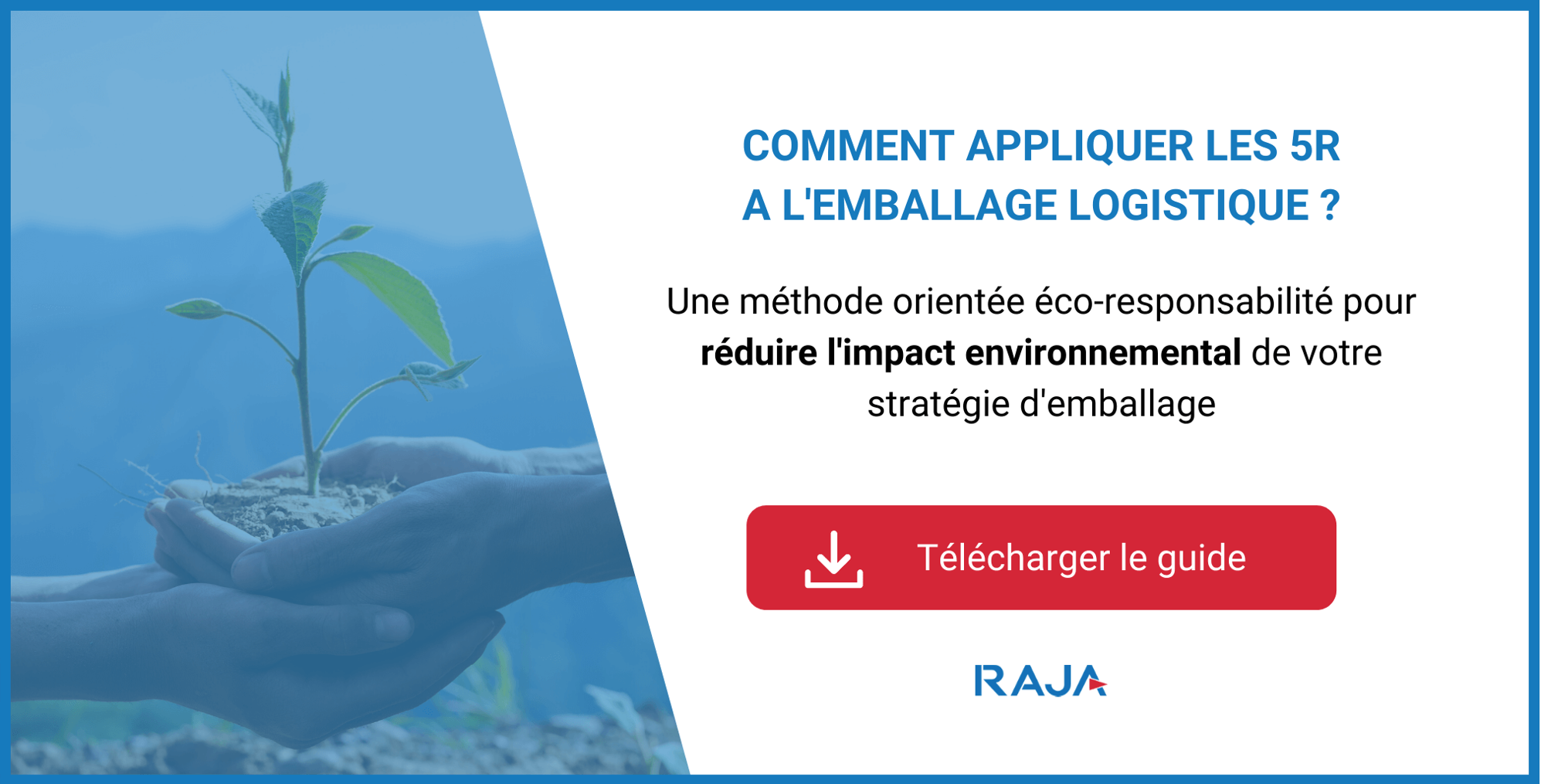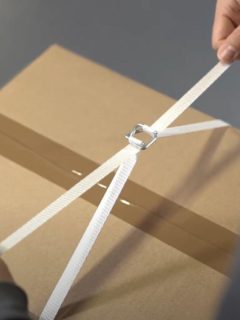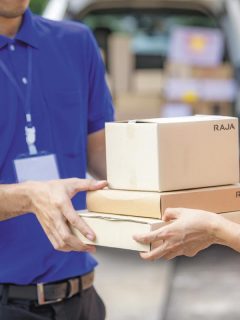For a long time, companies’ logistics centres were able to sing “plastic is fantastic”.
Plastic is a packaging material that can be as strong, flexible or hard as you like, and can be adapted to all types of products – all at a very low price.
In recent years, however, there has been a significant shift in business practices away from plastic packaging, driven by a number of factors:
- A global ecological awareness, particularly in relation to marine plastics that pollute the oceans and kill animals
- A growing health awareness, with micro-plastics and their endocrine disrupting effects.
- Legislation that is becoming stricter every year
Faced with plastic bashing in the media and on social networks, it seems difficult today to defend plastic as a packaging material.
Yet plastic can still be a good solution – but not just any type of plastic, and not just for any purpose!
Plastic packaging is still necessary for certain products
First of all, it’s important to note that for certain sectors of activity, plastic packaging remains essential. It is the only material capable of preserving their products during storage or transport, and even ensuring consumer safety.
Plastics have barrier properties (resistance to moisture, oil or air) that are still needed in some sectors, for lack of an alternative with similar properties.
For example:
- In the food industry, plastic packaging is used to preserve foodstuffs.
- In the pharmaceutical industry, it is necessary to isolate chemical products, cosmetics or samples for biological analyses in order to preserve their integrity.
- For transporting products that are subject to corrosion or moisture, plastic is the most insulating material.
- For transporting hazardous products, a LDPE plastic bag is needed to isolate the goods from the chosen packaging (wood or cardboard).
While these other sectors currently have no alternative for protecting some of their goods, many others are looking at the end of plastic packaging.
Not all plastics are bad for the environment
When we think of “plastic packaging”, we often think of petro-sourced plastic. But plastic is not necessarily fossil-based!
Innovations in packaging now mean that logisticians can pack their products in eco-responsible plastics, known as “bioplastics”, or biosourced plastics.
The raw material for this packaging is made from biomass (plants, plant waste, etc.), such as :
- Corn, potato, wheat, rice or maniocstarch
- Sugar from sugar cane or sugar beet
- Wood or cottoncellulose
Plastic packaging can be 100% biobased, or only partially. It can also be biodegradable or not, compostable or not.
To find out more, see our article on biobased packaging.
Some plastics recycle well
In addition to bioplastics, it’s important to remember that certain types of petro-sourced plastics can be reused in appropriate ways.
Plastics that can be recycled belong to the following families:
- Polyethylene terephthalate (PET)
- High-density polyethylene (HDPE)
- Polypropylene (PP)
These should be disposed of in the yellow bin, so that they can be recycled or upcycled.
Recycling one tonne of plastic saves no less than 830 litres of oil. And if you recycle one tonne of PET bottles, you save 2.29 tonnes of CO2 equivalent*.
Of course, efforts to recycle plastic must continue to be pushed forward: only 26% of plastic waste is recycled in France, and 43% of that which is not is used for energy recovery.
All the more reason to clearly indicate on your plastic packaging the material from which it is made, and to include the appropriate labels to guide your customers to the right sorting facility where they can be placed.
Carbon footprint of plastic and cardboard: a tough match?
The alternative often chosen by companies to plastic packaging is cardboard packaging.
But when it comes to comparing the carbon footprint of these two materials, it’s hard to tell them apart in environmental terms:
- On the one hand, the carbon footprint of cardboard is 964 kilograms per tonne of CO2 equivalent, compared with around 1,870 kilograms of CO2 equivalent per tonne produced for plastic.
- But, on the other hand, the water consumption to produce 1 kg of cardboard is 60 to 400 litres of water, compared with 1 to 2 litres of water for 1 kg of plastic.
What’s more, even if you decide to consider cardboard more environmentally friendly, you need to look at its entire life cycle, from design to end-of-life, to ensure that it is eco-responsible.
In particular, make sure you choose cardboard packaging:
- Made from sustainably managed forests
- Recyclable
- Made from recycled materials, if possible
Non-single use: the key to fairer use of plastic?
You’ve probably read it: the AGEC packaging law sets out to say goodbye to single-use plastic packaging by 2040. The way this legislation is worded is the very symbol that plastic is not the material to blame, but the way it is used.
This is what Fabrice Petier, designer and eco-design consultant, told us in an interview:
“Plastic is not the problem as such. The problem is rather the way plastic is used, and in particular its single use. Companies are still asking too many questions about ‘how to use plastic’, rather than ‘why use it’. All this leads them to overprotect, overpack and overconsume this material.
Faced with this problem, the solution seems to lie in reusable plastic packaging – either by the company internally, or by the end customer who receives their product in plastic packaging.
And this is the choice that many logistics operators make when it comes to choosing equipment for storing their products in-house. They turn to solutions such as :
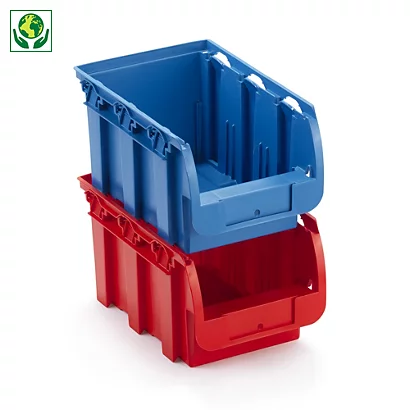 |
Plastic spout binsThese are resistant to oil, grease and temperature variations, and are an alternative to cardboard storage boxes. Made from PP plastic, they are also recyclable. |
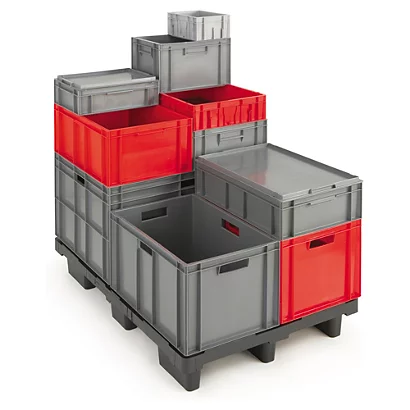 |
Stackable plastic binsStackable plastic bins can be palletised and stacked. They’re tough, practical and recyclable. |
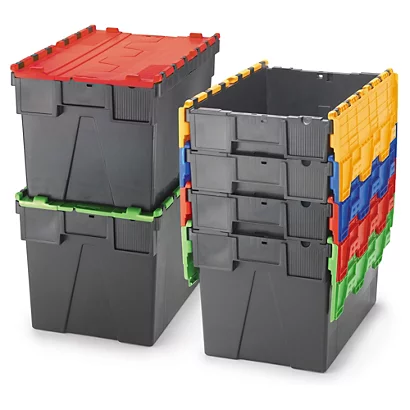 |
Plastic shuttle binsPlastic shuttle bins are hard-wearing and recyclable after sorting and collection. |
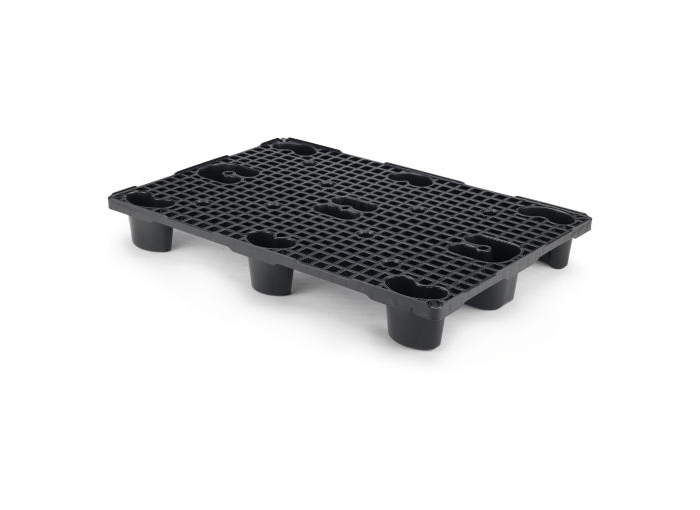 |
Plastic palletsPlastic pallets are ideal for storing and distributing products, and are as robust as they are durable. |
In short, what are the key facts about plastic packaging? Rather than fighting plastic on principle, we need to ask ourselves what is the ‘right packaging’ for your products, their protection needs, and the customer experience you want your consumers to enjoy.
Some companies will not be able to do without plastic for the packaging of their products – or even petro-sourced plastics. Others will be able to choose biobased, reusable or recyclable alternatives, or find alternative materials that are just as protective and enhance the value of their goods.
It’s up to you to ask yourself the right questions, to make your logistics practices as environmentally friendly as possible!
* Source : PAPREC












